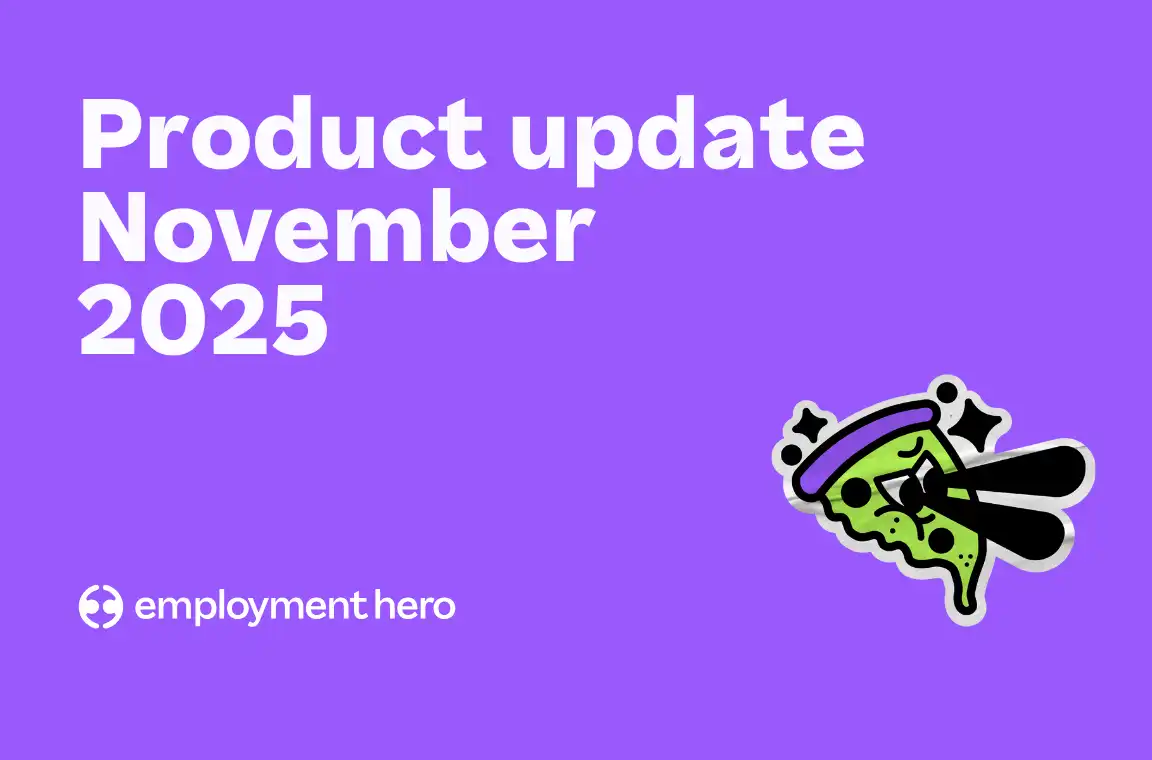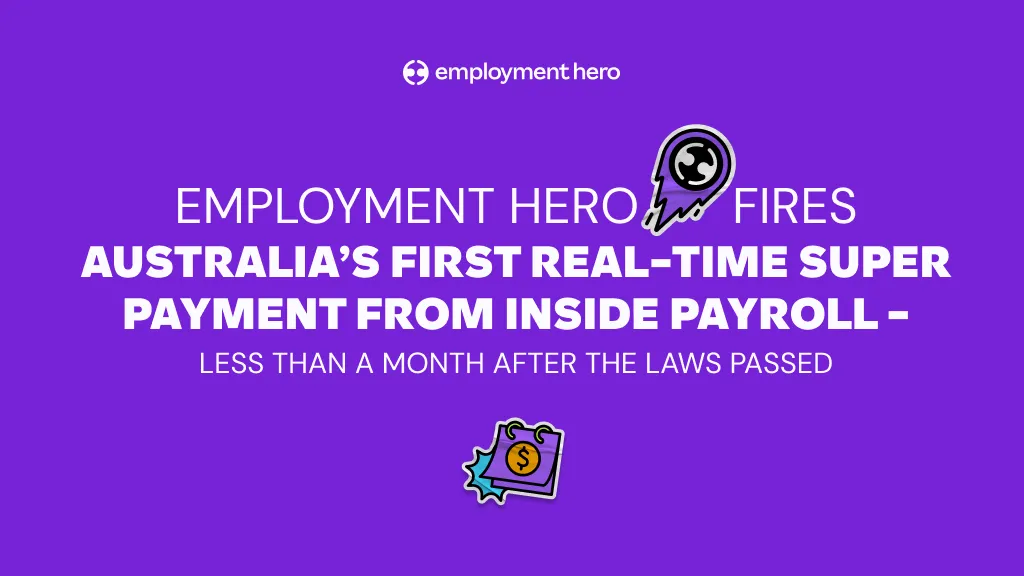Performance management for SMEs webinar FAQs
-

The Team

Contents
Performance management is a process that’s essential for building a strong and engaged team, but it’s not always straightforward.
That’s why we hosted the Employment Essentials: Performance Management for SMEs webinar. Our HR experts, Neath Sokhom and Timothy Miller, shared practical advice on everything performance management from running effective performance reviews to addressing underperformance, offering practical advice for businesses of all sizes.
During the webinar, attendees asked some great questions that we didn’t have time to answer. We’ve made sure to follow up on every single one that went unanswered and compiled them into this FAQ article.
If you want to watch the full Employment Essentials webinar, you can catch up on-demand.
Whether you’re just starting out or looking to refine your approach, these insights will help you take your performance management to the next level.
Disclaimer: The information in this article is current as at September 2025 and has been prepared by Employment Hero Pty Ltd (ABN 11 160 047 709) and its related bodies corporate (Employment Hero). The views expressed in this article are general information only, are provided in good faith to assist employers and their employees, and should not be relied on as professional advice. The Information is based on data supplied by third parties. While such data is believed to be accurate, it has not been independently verified and no warranties are given that it is complete, accurate, up to date or fit for the purpose for which it is required. Employment Hero does not accept responsibility for any inaccuracy in such data and is not liable for any loss or damages arising either directly or indirectly as a result of reliance on, use of or inability to use any information provided in this article. You should undertake your own research and to seek professional advice before making any decisions or relying on the information in this article.
Roles and responsibilities FAQs
There’s no legal rule on who must run it. The key is procedural fairness. Have clear reasons, a chance to respond and offer a support person. Managers can lead day to day and HR could step in where risk is higher or consistency is needed.
HR is not required to sit in. Manager-only meetings are fine if notes are kept and the employee can bring a support person. HR may be brought in for complex matters or if termination is being considered.
If you have a subscription to the HR Advisory service, we can provide guidance on how to proceed.
Process and documentation FAQs
Warnings are part of performance management. Use them when the issue is clear and improvement is achievable. The key is telling the employee the problem, the consequences, and giving them a chance to improve.
Yes, if they accurately capture discussions. Best practice is to send a copy to the employee with wording such as, “Here’s a copy of the notes from our discussion for your record. We’ve reviewed it, and it covers all the key points discussed. If anything is inaccurate, please let me know by [X date].”
No. As long as you’ve already informally counselled the employee and documented your efforts, you can proceed to a PIP if issues remain unresolved.
Have another person present to take notes/be a witness. After the meeting, send an email summarising what was discussed and agreed on.
Document your performance management process in Employment Hero
Integrating clear and consistent documentation into your performance management process is key to protecting your business. Employment Hero makes this simple with our suite of performance tools.
Our platform provides a central, secure space to record every step of the process, from jotting down informal notes and performance conversations, to formal letters of underperformance and records of PIPs. Instead of managing scattered emails or handwritten notes, you can easily log meeting details, store supporting documents and track progress.
With everything documented and organised within Employment Hero, you’ll have a complete record that supports fair decision-making and compliance. If questions arise down the line, you’ll have everything you need at your fingertips, reducing the risk of confusion and avoiding the dreaded “he said/she said” situations.
Setting expectations and goals FAQs
The manager can minimise risk by putting clear goals in place straight away. Without them, the employee could argue that goals are unclear, shifting or arbitrary. Having clear goals, along with weekly coaching and training, will make the process much more defensible in the event of a legal dispute.
Make goals SMART (specific, measurable, achievable, relevant, time-bound). Ask employees how they’d like to be supported and incorporate their input.
The examples we gave tended towards tasks because the performance management process is best used to deal with shortfalls relating to tasks.
For behavioural issues, the performance management process is not the best tool. If an employee’s behaviour is inconsistent with employer expectations, it might be best addressed through informal counselling or, in more serious cases, formal disciplinary action.
Support at work and reasonable adjustments FAQs
Before taking formal action, it’s a good idea to obtain a medical opinion on:
- Whether the employee does have ADHD and/or autism.
- Whether there’s a material connection between the condition and punctuality.
- Given the role, what adjustments can be made and for how long.
Reasonable adjustments depend on the job and what can be accommodated. Common examples for ADHD include later start times or remote work.
You can manage performance, but expectations and support must be clear and adjustments considered. Otherwise, you risk a disability discrimination or general protections claim. A medical opinion can help clarify how the condition impacts performance and guide fair adjustments.
Termination and alternatives FAQs
Only if the employee has first been told termination is being considered and has had a genuine chance to respond (“show cause”). Many employers hold a short follow-up meeting after considering the response.
Theft, fraud or assault are examples of “serious misconduct” that can justify summary dismissal, but a fair investigation and process are still required, including giving the employee a chance to respond.
Redundancy must be genuine. The role is no longer required and consultation obligations are met. Using redundancy to avoid performance management risks an unfair dismissal finding.
Other worker types
Yes.
- Employees: Performance management applies.
- Contractors: Not employees. Manage concerns according to the contracting agreement.
- Labour hire staff: Employed by the labour hire company, not you. Raise issues with the labour hire company.
Make performance management simple with Employment Hero
Managing performance doesn’t have to be complicated. With Employment Hero’s Employment Operating System, you’ll have access to a range of tools designed to make the process easier, more efficient and stress-free. From streamlined performance review templates to tools for tracking goals and managing underperformance, we’re here to help you build a high-performing team.
Our platform is built to support businesses of every size, giving you everything you need to engage your employees, manage compliance and focus on business growth. Ready to take the next step? Explore how Employment Hero can transform the way you manage performance today and chat to one of our business specialists.
Related Resources
-
 Read more: PEO vs. EOR: A guide to global hiring
Read more: PEO vs. EOR: A guide to global hiringPEO vs. EOR: A guide to global hiring
Learn the key differences between a PEO and an EOR. Discover why an EOR is the smarter, safer way to…
-
 Read more: Product Update: November 2025
Read more: Product Update: November 2025Product Update: November 2025
Welcome to the November 2025 product update from the Employment Hero team. We’ve got lots to share around Workflows, Rostering,…
-
 Read more: Payday Super pressure eased: Employment Hero fires Australia’s first real-time super payment from inside payroll – less than a month after the laws passed
Read more: Payday Super pressure eased: Employment Hero fires Australia’s first real-time super payment from inside payroll – less than a month after the laws passedPayday Super pressure eased: Employment Hero fires Australia’s first real-time super payment from inside payroll – less than a month after the laws passed
One month on, Employment Hero, Zepto and OZEDI deliver the first payroll-embedded super-clearing payment over the New Payments Platform (NPP),…























